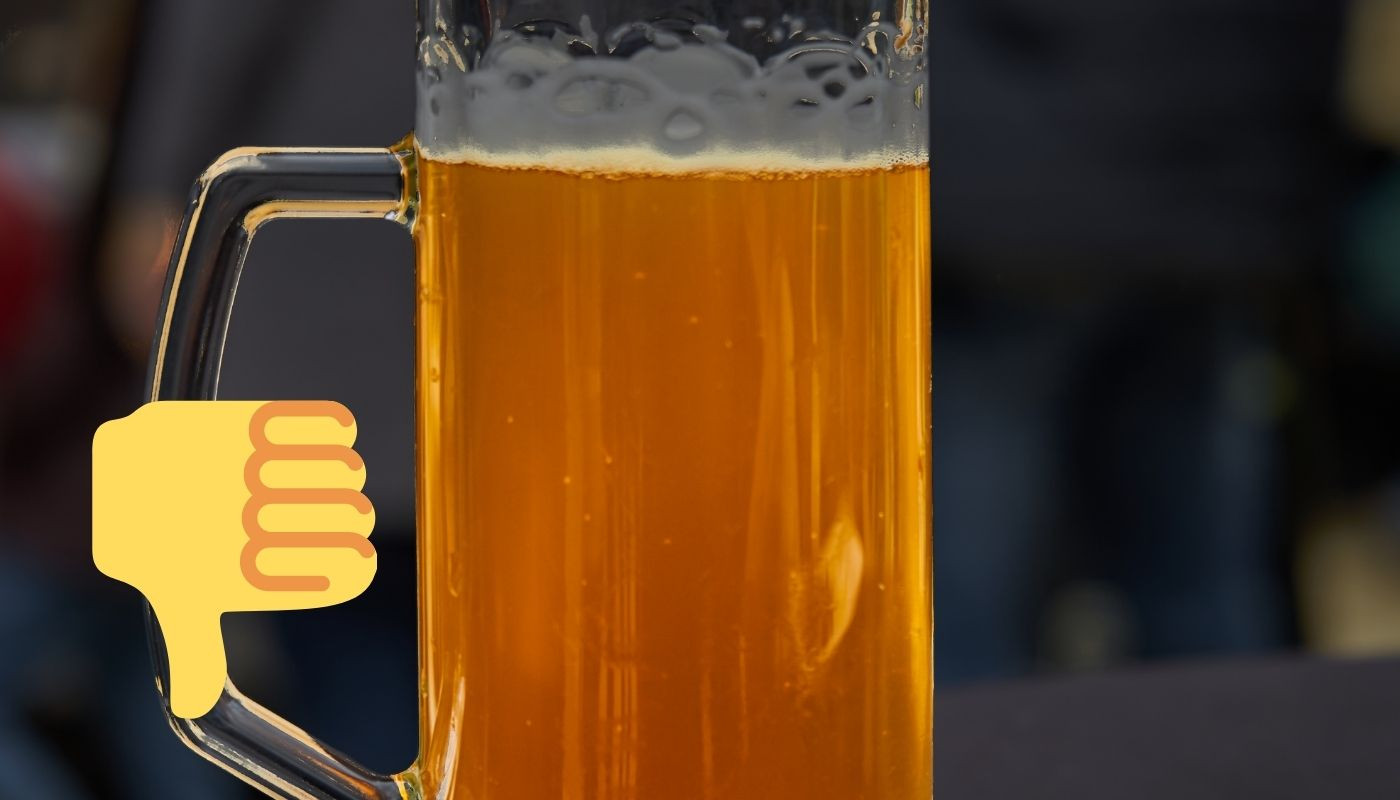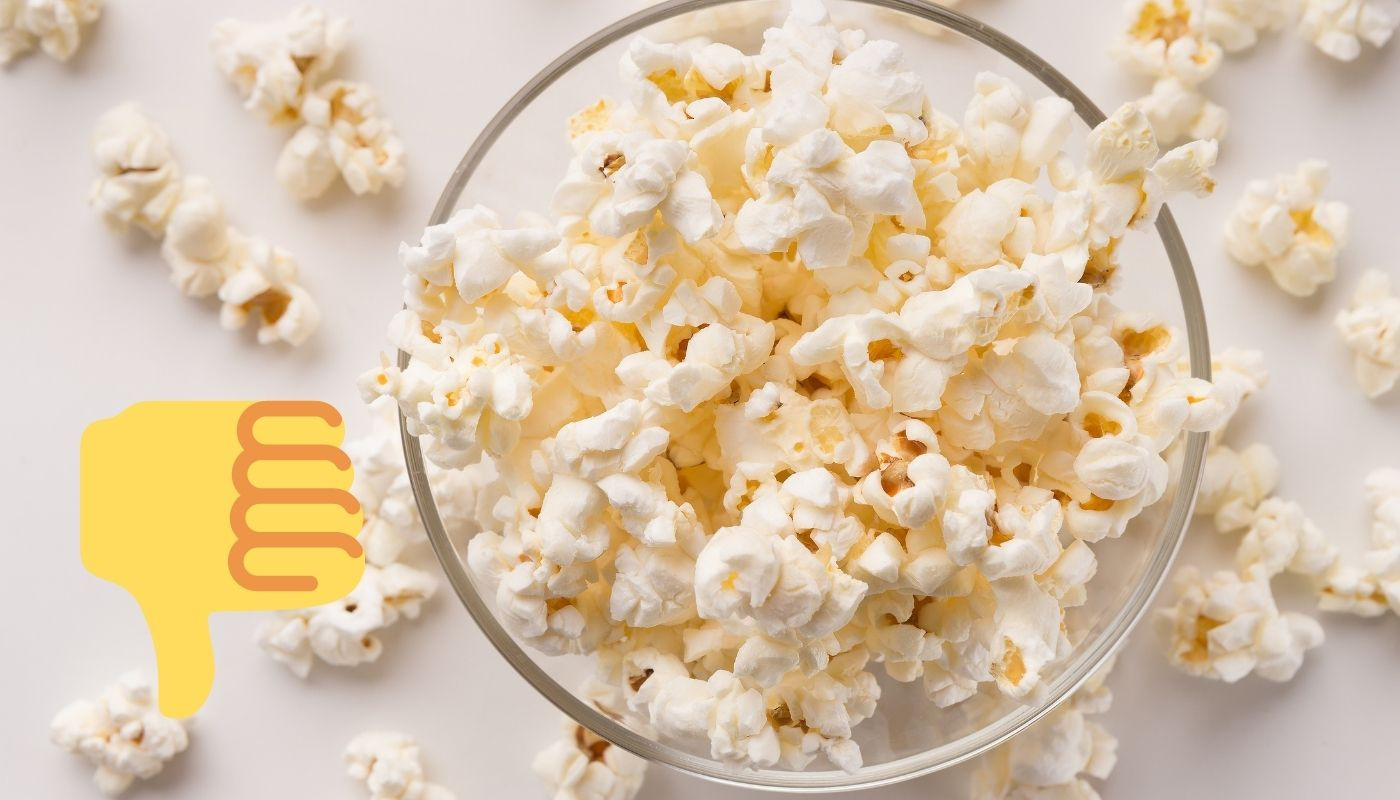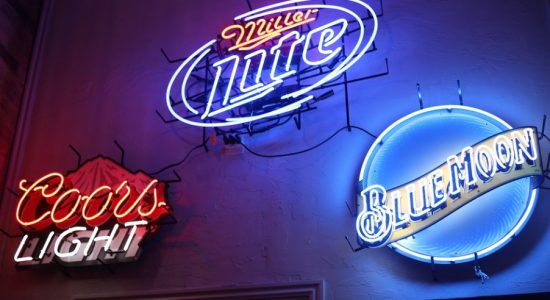What Does Beer Taste Like? The Answer is Not Popcorn

When I first entered the beer scene, I was shocked by the variety of beer flavors out there. I had always imagined beer as the stuff in a can that my parents drank. Trips to several bars, naturally, had me reevaluating my assumptions and asking, “What does beer taste like?”
What does beer taste like? Generally speaking, beer can be sweet, sour, or even bitter depending on the ingredients, storage process (is the beer fresh, canned, or bottled?), age, and manufacturer. As you can see, there is no set taste.
Knowing this, I decided to study more about the taste of beer.
If you’re curious about the spectrum of beer flavors, as well, keep reading to find out more!
What is The Taste of Beer?
If you’ve never tasted beer, you may understandably be wondering what it tastes like. The reality is that there are several flavor profiles when it comes to beer.
Let’s take a look at a few:
Bitter
Many beers boast a bitter flavor.
This is because alcohol in itself is bitter and because many alcohols contain a substance known as “hops.” Cones of a plant known as Humulus lupulus, hops give bitter an extra bitter taste.
Sweet
Because beers are made with sugary substances such as yeast, which are then fermented into alcohol, many boast sweet flavors depending on the extent to which other substances are added and the brewing process that is used.
Read also: What is Sweet Beer?
Sour
Many beers are also sour, largely due to the strains of yeast that are added and the addition of acid to the beer once the initial fermentation and brewing processes have been completed.
Beers may also be sour if they’ve gone bad (more on that later), so it’s important to know why your beer is sour before continuing to drink it.
Fruity
Several beers are also fruity.
This is a result of the fermentation process used, with many brewers choosing to add fruit juices and even fresh fruit to the mixture during the fermentation process.
For those put off by the bitter taste of standard beers, these fruitier flavors can serve as a nice and more palatable introduction to beer drinking.
Does Beer Taste Good?
Beer has a bit of a reputation when it comes to taste—and it’s not exactly a good one.
For first-time drinkers, especially, beer can be surprisingly bitter and not exactly palatable. But a deeper dive shows this reputation isn’t necessarily deserved.
Around the world, nearly 200 million liters of beer were consumed in 2018. That wouldn’t happen if beer tasted bad.
The truth is that beer is an acquired taste.
Though the alcohol makes it hard to swallow (and I mean that quite literally) at first, most beer drinkers grow to like the flavor over time. Eventually, one can even begin to appreciate the wide variety of flavors that come with a diverse spectrum of beer.
Is Beer Sweet or Savoury?
One of the first things that jumps out to first-time beer drinkers is how bitter the drink is.
Most seasoned beer drinkers, however, describe beer as sweet and even savoury. How is this possible? It has to do with the ingredients that are used to brew beer.
Specifically, the beer brewing process involves turning sugars into alcohol. Generally, however, brewing isn’t a zero-sum game. This means that the bitter taste of alcohol and the sweet taste of sugars both linger in the final product.
For those who are used to the bitterness of the fermented alcohol, the sweet flavor of alcohol can take over, even to the point that the drink can become savoury.
Of course, how sweet a beer is depends on the type of beer being consumed.
As we’ll see in the next section, different types of beer have different flavors. Make sure to refer to this guide to find a flavor that best suits your tastes.
Ingredients that Alter How Your Beer Taste Like
Not happy with the taste of your homemade beer? Wondering how different beers achieve their flavors?
Many brewers change the taste of their beer through three simple ingredients: yeast, hops, and barley.
Let’s take a look at the impact these three ingredients can have on the taste of beer:
– Yeast
You can’t have beer without yeast, the substance that facilitates the fermentation process.
Yeast helps turn sugars into alcohol, and how much yeast you include depends on the type of beer you make.
As a general rule, increasing or decreasing yeast input can be the difference between producing a lager or an ale.
Because yeast involves sugars, the substance adds a sugary flavor to beer.
Read also: Can You Make Alcohol Without Yeast?
– Hops
Coming from female flowers, hops are typically used to add a bitter or tangy taste to beer.
Generally speaking, the more hops a beer contains, the more bitter it becomes.
In some cases, hops are added to provide a more sophisticated and balanced flavor to a beer.
– Barley
Barley (and in particular malted barley) is a common substance that is used to add sugar to beer during the fermentation process.
It is barley that yeast pulls on to produce carbon dioxide and alcohol.
The inclusion of barley can affect the sugar levels of beer and the taste by imparting added sweetness.
Because barley is a grainy, it can also add a grainy flavor or texture to beers depending on how much is added.

Types of Beer and What They Taste Like
So what types of flavors can you expect from different types of beers? Let’s take a look at some popular beer types and what they taste like:
American Lager
Regarded as a “light” lager, American lagers are among the most popular bottled and canned beers. Famous brands such as Budweiser and Coors are American lagers; like other beers of this variety, these brands are soft in flavor, meaning they’re not overly bitter or sweet, and light in color.
Read also: How Many Types of lager Are There?
German Pilsner
German Pilsners are perfect options for those looking for more malty beers. Expect a malty beer with a noticeable hop taste.
Including such popular options as Sierra Nevada’s Nooner Pilsner, these alcohol variety is a little darker in color (pale gold) and has a richer flavor than most lagers.
Amber American Lager
Amber American lagers such as the Samuel Adams Boston Lager and the Yuengling Lager are produced with both light and medium hop flavors and a surprisingly smooth taste.
These beers are known for their rich, malty flavors and for their caramel scent.
Compared to other options, Amber American lagers are sweet and dark, making them a perfect option to drink with cheese.
Vienna Lager
Another dark lager, Vienna lagers such as Dos Equis Amber lager are popular for their sweet taste.
These beers tend to have a higher sugar content and a darker color.
Due to their sweetness and maltiness, Vienna lagers have only a mild hop flavor.
English Brown Ale
Another dark ale with a caramel scent, English brown ales such as the popular Newcastle Brown Ale are known for their strong nutty flavor and rich maltiness.
These ales tend to be a bit “heavier” than other alcohols, particular crisp ones such as Vienna lagers, making them good options to eat with meat and cheese.
American Pale Ale
In contrast to some of the darker beers above, American pale ales such as Smuttynose Shoals Pale Ale boast rich hop flavors and a light brownish color.
These beers aren’t very heavy in flavor, with tastes compatible with seafood flavors.
English Bitter
Bitter, fruity, and rich in hops, English bitters such as Sharp’s Brewery’s Doom Bar Bitter are sweet and crisp.
Light in flavor and in alcohol content (relatively speaking), these sweet beers are great for those looking for fruitier alcohols.
Bottled/Canned Beer vs Draft Beer: Do They Taste Differently?
How does drink storage impact a beer’s taste?
As you might imagine, beer tastes different whether you’re drinking it from a bottle/can or straight out of the tap. But what are the differences between the taste of stored beer and craft beer that’s totally fresh? Let’s take a look:
Bottled/Can Beer
It’s a common misconception that bottled beer tastes better than can beer. Blind taste tests have shown that to not be the case, with some science indicating that canning may be the way to go when it comes to long-term storage.
There is a difference, however, between the taste of bottled/canned beer and craft beer that’s stored in a keg.
Read also: How long Does a Keg Last?
Bottled beer, in particular, is subject to oxidation brought on by light in addition to the pasteurization that’s performed on bottled beer to keep the drink safe.
All of this can affect the taste of beer, generally making it less fresh than beer that’s coming from a newly tapped keg.
Craft Beer From a Keg
When compared to bottled or canned beer, craft beer from a keg, also called draft beer, tends to taste fresher and crisper.
That’s because kegs, once opened, tend to go faster than beer that’s stored in bottles or cans. This means that the beer is less prone to oxidation, making it better to taste.
For some beers, the keg itself can add flavor, particularly if the brewer has chosen to add flavored extracts to the keg.
Why Does Beer Taste Better in a Glass?
If you’ve ever had beer in a glass, you already know that it tastes better (if you haven’t, you’re going to have to trust me on this). But why is beer so much better in a glass than it is in a can or from a different type of container?
It’s actually pretty simple: when you pour beer into a glass, it undergoes a process of carbonization whereby carbon bubbles are released into the beer. This is what creates that distinctive foam that you see with craft beers and others that are poured into a glass. These bubbles are constantly forming and popping, giving off a flavorful aroma that works to influence the taste of the drink.
The end product is a beer that’s richer in both smell and taste, which is why many seasoned drinkers prefer to drink their beer from a glass.
When you drink beer from other sorts of containers, this carbonization process doesn’t take place. This means the beer may taste “flatter.”
There are other benefits to pouring your beer in a glass, as well.
Because you can see the color of the beer and the type of foam that’s produced (thick or thin), you can get a better sense of what the beer will taste like, as these will indicate how malty and creamy the beer will be.
What Does Beer Taste Like When It’s Bad?
By now, you should have a good idea of what beer can taste like when it’s good, but what does it taste like when it’s bad? Let’s take a look:
Stale
When beer has been oxidized, it generally goes “stale.” This means that the taste won’t be crisp or fresh, but rather very flat and generally unappetizing.

Cabbage or Sewage
In worse cases, the beer may taste like cabbage or sewage ( a sure sign that it’s no longer fit to drink). This beer is often accompanied by a strong skunk-like smell. This beer is commonly called “skunked” beer.

Popcorn
Strangely, some old beer can even taste like popcorn. While this flavor is one of the lesser evils of soured beer, this beer should still be avoided due to its lack of freshness and its ability to give you a stomachache.

Conclusion
Rich, creamy, malty, sweet, sour, and bitter.
Beer comes in so many flavors that it can be a little confusing at first. If you’re just now looking to get into beer, it’s important that you review the information in this guide to find the right beer for you.
With his piece, you’ll be able to understand the different flavor profiles of a variety of different beers, as well as identify whether a beer has gone bad.
Keep this guide in mind when you take your first sip—and cheers!






